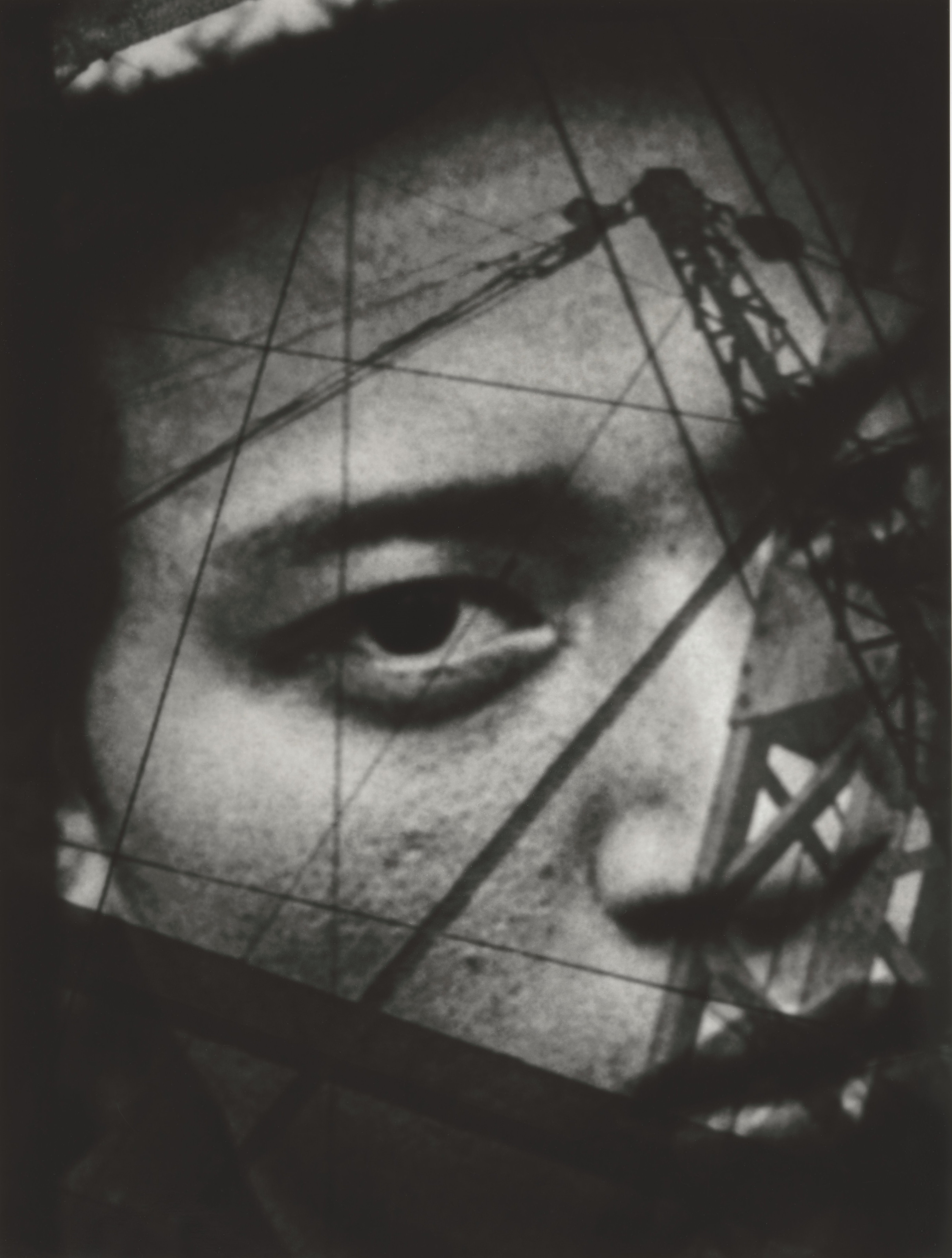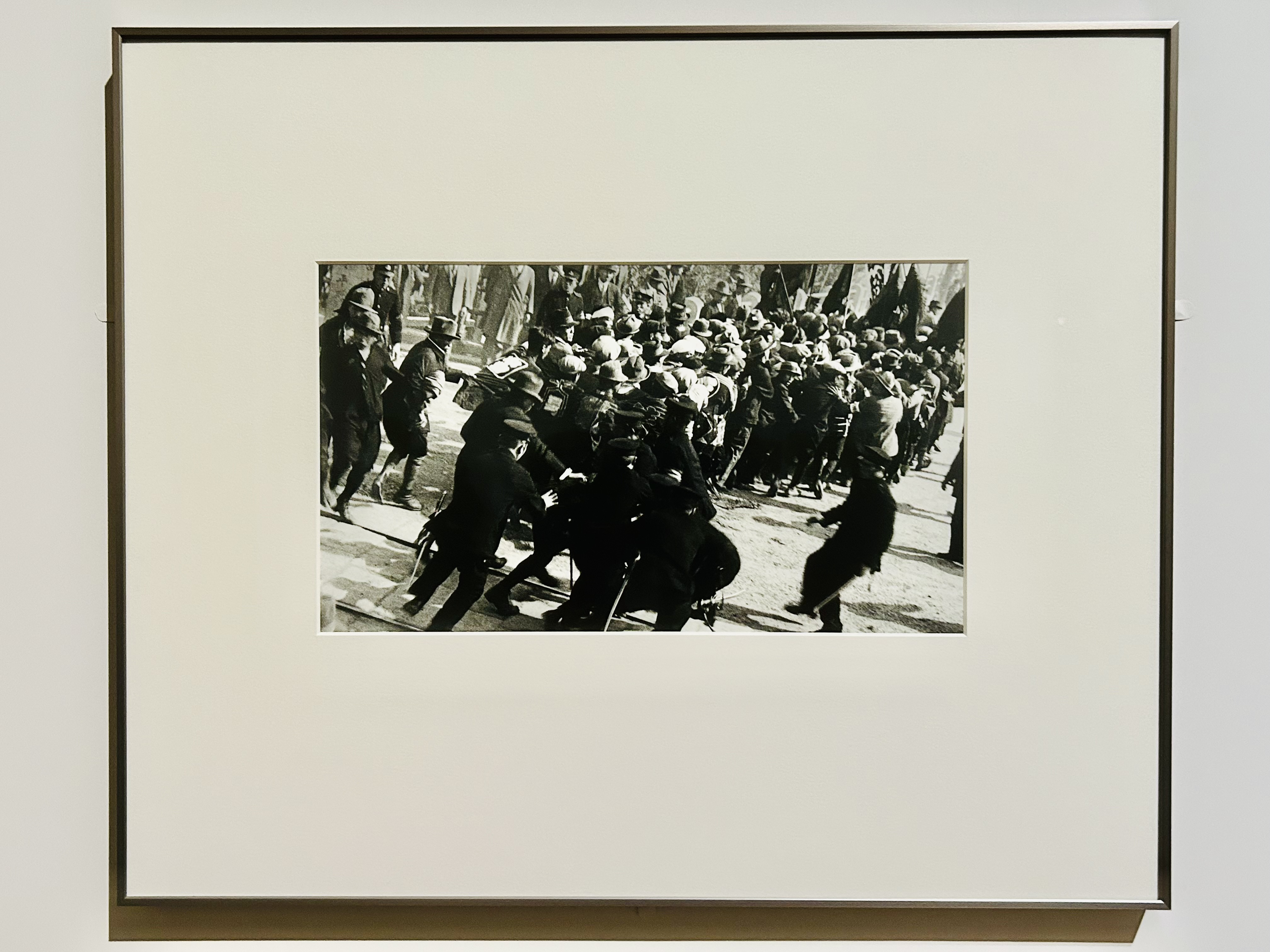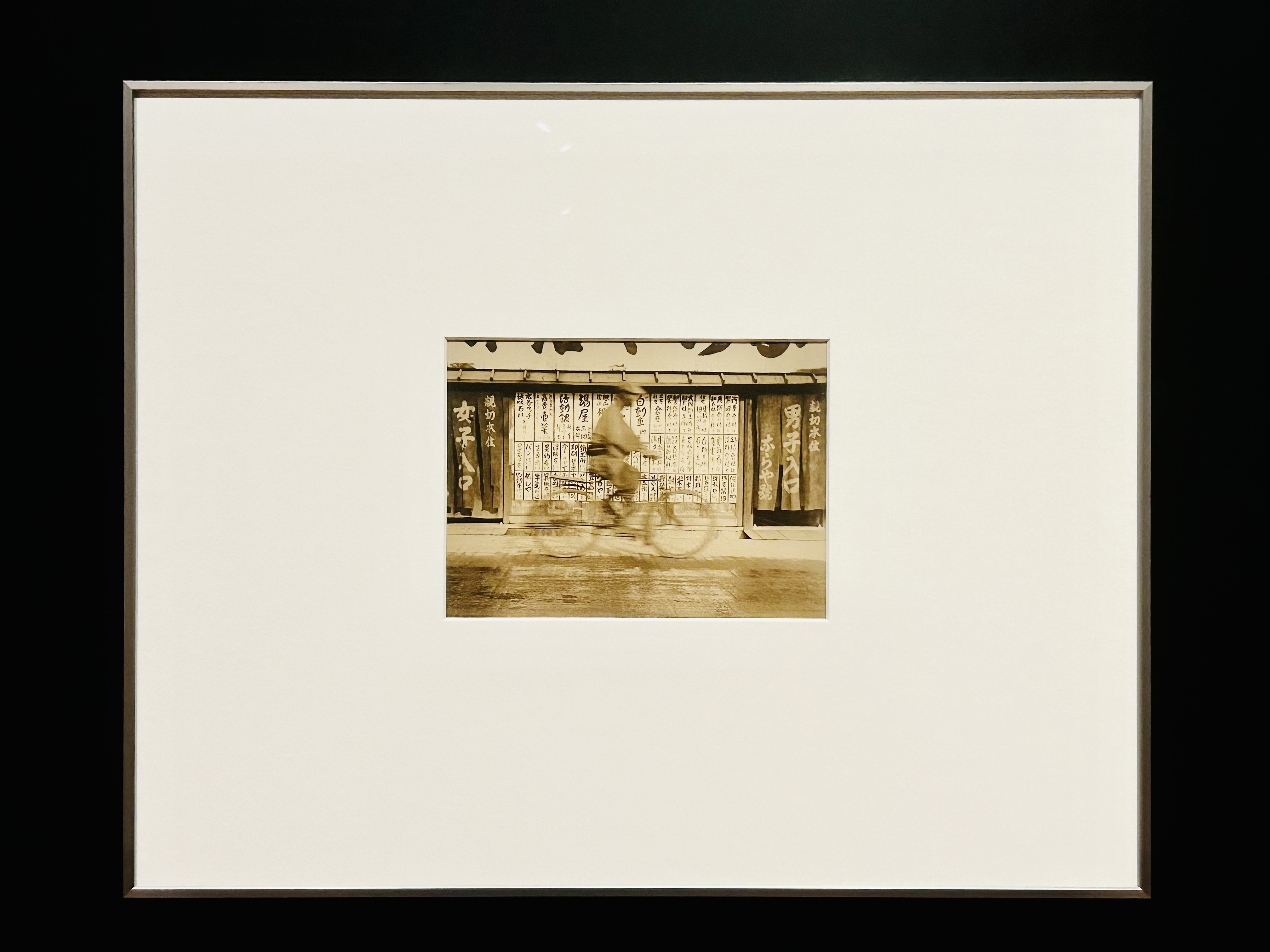YASUI NAKAJI 1903-1942: PHOTOGRAPHS
HAPPENINGText: Alma Reyes
The exhibition comprises three parts of the 1930s period, dwelling on city scenes, landscapes and still life, and fantasies. In the first part covering the late 20s to early 30s, Yasui’s works have flourished exceedingly, expanding to the inclusion of laborers and factories as subjects. He was strongly influenced by the New Photography (Shinko Shashin), marked by features of Germany’s New Objectivity (Neue Sachlichkeit) and Surrealism. This movement enhanced creative expression by mechanistic manipulation of the camera and lens. As an active member of Tampei Photography Club founded in 1930, Yasui exercised novel techniques, such as shooting from unconventional angles and executing photograms, photomontages and abstract renditions.

Nakaji Yasui, (Staring), 1931/2023
A very captivating shot from this period is (Staring) (1931/2023). The human face dominates the entire frame, camouflaged by what appears to be a construction site. It seems that each negative was exposed four times, but two have been reversed, and one is believed to have been used twice. The intricate method involved digitizing, cropping, and superimposing the negatives to produce one single image, and then performing the gelatin silver print process.

Nakaji Yasui, May Day Scene, 1931 2004, The Shoto Museum of Art, Photo: Alma Reyes
Another powerful piece in this section is May Day Scene (1931/2004), which seized an immensely dramatic episode of demonstrators revolting in the streets of Osaka. By framing the angle on a sloping horizon, we feel the movement and chaos of the actual scenario.
You can also spot a glass case of Yasui’s Rolleiflex cameras in this area.
In the second part of the 1930s, Yasui contributed largely to magazines, and also acted as a judge in photography exhibitions and competitions. The section looks at children, insects, small animals and still life objects, woven in daily settings. During this time, Yasui’s brother, sister and son died consecutively – tragic circumstances that may have impacted his tendency to capture small creatures. A sample of this is seen in Moth 2 (1934), reflecting a stark contrast and tender lighting.

Nakaji Yasui, Sketch, c.1933, Private collection. On deposit at Hyogo Prefectural Museum of Art, Photo: Alma Reyes
Another photograph worth studying is Sketch (c.1933). Yasui cited the term “semi-still-life” to describe the combination of still life subjects and their improvised appearance at shooting locations. The result, consequently, transmits a sense of ambiguity between reality and the surreal. In this picture, the Japanese characters and noren curtains in the background become a backdrop of still-life objects behind a moving landscape represented by the man riding his bicycle.
Read more ...




